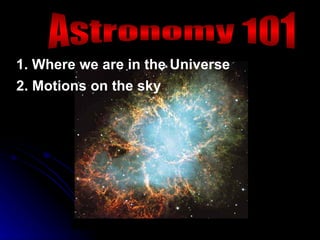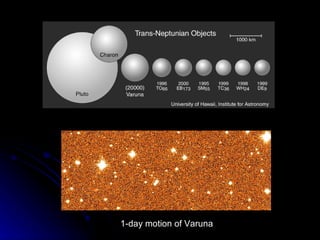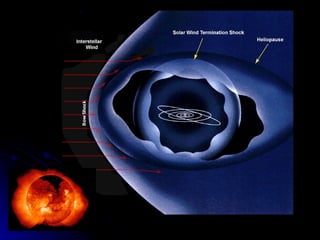1. The document describes the motions of objects in the sky and our location in the universe, including a description of the Milky Way galaxy and our solar system.
2. Key concepts covered include the coordinate systems used to locate celestial objects, precession of the Earth, and the causes of the seasons due to the tilt of the Earth's axis.
3. Motions of objects like the sun and stars are explained, including how the sun appears to move along the ecliptic and causes the seasons as the Earth orbits around it.













































































![f1 f2 f3 Adding oscillations with different phases and incommensurate frequencies f1 = sin[2 t + 1] f2 = 0.7 sin[3.1 t + 2.4] f3 = 1.3 sin[4.5 t + 0.3] f1+f2 f1+f2+f3](https://image.slidesharecdn.com/milky-way-physics-101-29667/85/Milky-Way-physics-101-78-320.jpg)











